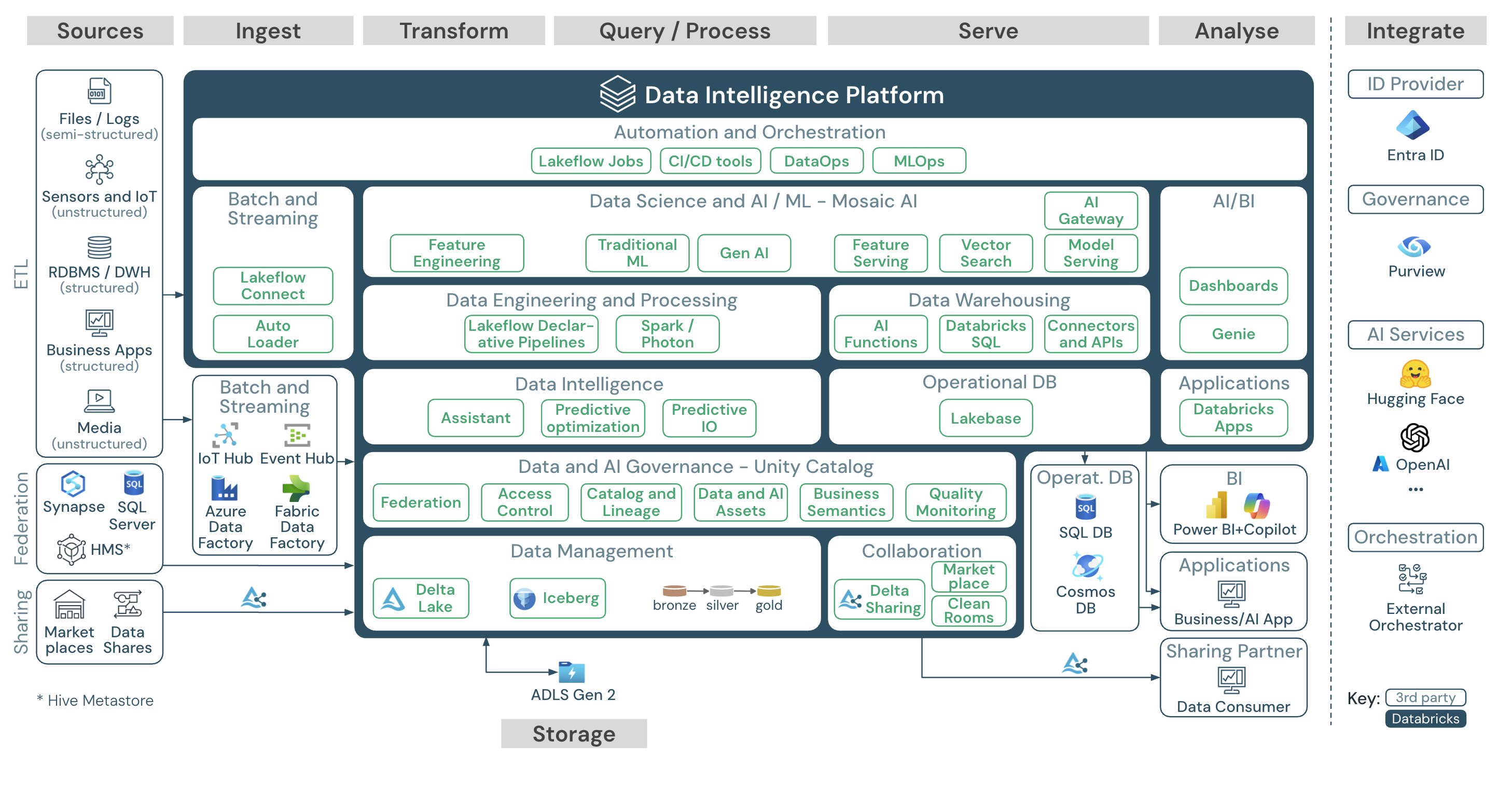Databricks: 10 Key Things You Must Know

Overview
Databricks, a cloud-based data platform, is revolutionizing big data and AI innovations. Founded in 2013 by the creators of Apache Spark, it has become a vital tool for companies aiming to manage and analyze their vast datasets effectively. Databricks combines the best of data lakes and data warehouses with its unique "Lakehouse" concept, providing an integrated environment for both data engineering and machine learning. As we delve into Databricks' offerings and significance, you'll discover its influence on industries, key features, and innovative platform components.
1. The Origin of Databricks
Founded by a team from the University of California, Berkeley, Databricks was born out of the desire to make Apache Spark accessible to a wider audience. The founders aimed to simplify big data processing and analytics. Their vision was to create a platform that could handle large-scale data workloads seamlessly, which led to the establishment of Databricks. The company's close ties to academia and innovation culture have been pivotal in its rapid growth and development.
2. Apache Spark and Databricks
Apache Spark, an open-source unified analytics engine, is at the core of Databricks' offerings. Known for its speed and ease of use in big data processing, Spark allows for ultra-fast computation across distributed systems. Databricks enhances Apache Spark's capabilities, providing a user-friendly interface and additional functionalities like collaborative notebooks, job scheduling, and integrated security. This marriage of technology makes Databricks an indispensable tool for data scientists and engineers.
3. The Lakehouse Architecture
Databricks introduced the "Lakehouse" architecture as a novel approach combining the features of data lakes and data warehouses. This revolutionary design offers the flexibility and scalability of a data lake with the reliability and performance of a data warehouse. It allows organizations to unify their data, breaking down silos and enabling more comprehensive and accurate analytics across diverse datasets, without the latency and cost of traditional systems.
4. Unified Data Analytics Platform
The Unified Data Analytics Platform by Databricks promotes more seamless collaboration among data teams. It integrates various processes, including data engineering, machine learning, and business analytics, onto one platform. This unification reduces the complexity of maintaining multiple systems and facilitates a more cohesive approach to data-driven decision-making, empowering organizations to deploy AI-driven insights rapidly.
5. Machine Learning and AI with Databricks
Databricks is particularly favored in scenarios involving machine learning and AI. The platform offers end-to-end machine learning capabilities, from data preparation to model training and deployment. With MLflow, an open-source platform within Databricks, users can manage the complete machine learning lifecycle efficiently. This integration streamlines experimentation and reproducibility of models, key factors in successful AI implementations.
6. Industries Benefitting from Databricks
Multiple industries leverage Databricks to enhance their operations, including finance, healthcare, media, and retail. In finance, real-time analytics on Databricks helps in fraud detection and risk assessment. Healthcare organizations use the platform to process large datasets for research and personalized medicine. Media companies optimize user engagement through sophisticated recommendation systems powered by Databricks' analytics capabilities.
7. Databricks Community and Collaborations
The community around Databricks is vibrant, characterized by a collaborative spirit among users, developers, and researchers. Databricks regularly hosts data and AI summits that bring together global experts to share insights and advancements. Collaborations with major players like Microsoft Azure and AWS have expanded Databricks' reach and provided users with flexible cloud deployment options tailored to their needs.
8. Notable Features of Databricks
Databricks boasts a range of features that enhance data processing and analytics. Among these are interactive workspaces for team collaboration, automated versioning, and built-in security and compliance measures. Its robust job scheduling feature ensures that data workflows are managed efficiently, while its scalable infrastructure supports both batch and streaming analytics seamlessly.
9. Challenges and Controversies
Despite its advantages, Databricks isn't without challenges. The complexity of cloud architecture and managing significant workloads can be daunting for newcomers. Additionally, as with any data platform, concerns around data privacy and compliance persist, requiring thorough governance strategies. The high cost of cloud resources can also be a barrier for smaller organizations considering Databricks.
10. Future Prospects of Databricks
Looking ahead, Databricks is poised to continue its trajectory of growth and innovation. The company is constantly enhancing its platform, incorporating more AI features and expanding its partner ecosystem. As enterprises increasingly adopt cloud-native architectures, Databricks is well-positioned to lead in big data analytics and drive the evolution of data science, machine learning, and AI capabilities.
Conclusion
Databricks has emerged as a pivotal force in the realm of data analytics and AI, thanks to its robust platform and innovative approach. From its beginnings with Apache Spark to the pioneering Lakehouse architecture, Databricks bridges the gap between data engineering and analytics. Its influence spans multiple industries, offering solutions that enhance efficiency and innovation. As data continues to grow exponentially, Databricks' future lies in its ability to adapt and lead in enabling organizations to harness the power of big data and AI.